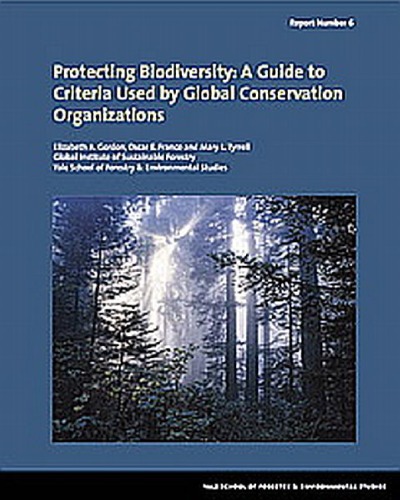

Most ebook files are in PDF format, so you can easily read them using various software such as Foxit Reader or directly on the Google Chrome browser.
Some ebook files are released by publishers in other formats such as .awz, .mobi, .epub, .fb2, etc. You may need to install specific software to read these formats on mobile/PC, such as Calibre.
Please read the tutorial at this link: https://ebookbell.com/faq
We offer FREE conversion to the popular formats you request; however, this may take some time. Therefore, right after payment, please email us, and we will try to provide the service as quickly as possible.
For some exceptional file formats or broken links (if any), please refrain from opening any disputes. Instead, email us first, and we will try to assist within a maximum of 6 hours.
EbookBell Team

4.0
46 reviews
Author: Elizabeth Gordon, Oscar Franco, Mary Tyrrell
This project was made possible through the financial support of the National Council
for Air and Stream Improvement (NCASI), the American Forest & Paper Association
(AF&PA), and the Forest Products Association of Canada (FPAC). The Yale School of
Forestry & Environmental Studies Global Institute of Sustainable Forestry provided
additional resources for the project. We are grateful for the support and ideas of Ben
Wigley of NCASI, Nadine Block and Brad Williams of AF&PA, and Professor Chad
Oliver at the Global Institute of Sustainable Forestry. We would also like to thank
Larissa Yocom, Radhika Dave, and Michelle Komie for their editorial and research
assistance.
We would like to give special thanks to all those at the NGOs profiled in this report
who took time out of their busy schedules to meet with us, participate in phone interviews or e-mail exchanges, review drafts, and provide resource materials. Without
their willingness to share information and insight about their conservation priority
setting approaches, this project would not have been possible. For this we are very
grateful to Michael Parr at Alliance for Zero Extinction; Mike Evans at BirdLife
International; John Pilgrim, Penny Langhammer, Mike Hoffmann, Thomas Brooks,
and Justin Ward at Conservation International; Eric Butterworth and Duncan
Morrison at Ducks Unlimited Canada; Jonathan Higgins, Jonathan Hoekstra, and Jeff
Parrish at The Nature Conservancy; Eric Sanderson, David Wilkie, Amy Vedder, and
Karen Minkowski at the Wildlife Conservation Society; Mila Alvarez and Lars
Laestadius at World Resources Institute; and Kerry Cesareo and John Morrison at
World Wildlife Fund.
The American Forest & Paper Association’s Forests Conservation Priorities Task
Group, including representatives of AF&PA member companies, FPAC, and NCASI
reviewed the draft report and their comments helped to improve the format and flow
of the final report
Chapter1 : Introduction
Chapter 2: Content
Chapter 3: Conclusion
Chapter 4: Appendices
Chapter 5: Glossary
Chapter 6: References
Chapter 7: Index
why is protecting biodiversity important
7.3 protecting biodiversity
what alternative options are there for protecting biodiversity
how are seed banks useful in protecting biodiversity
ways of protecting biodiversity
Tags: Elizabeth Gordon, Oscar Franco, Mary Tyrrell, Protecting Biodiversity, Conservation Organizations